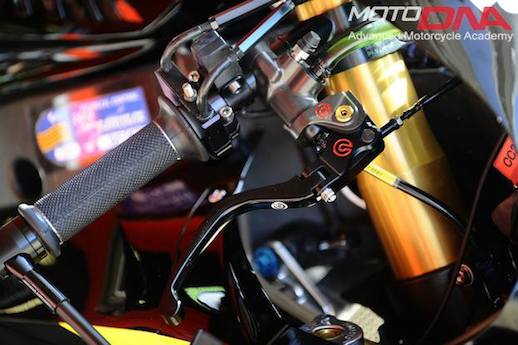Emergency braking causes more confusion and trepidation for riders than anything else, according to Mark McVeigh of the motoDNA motorcycle training course.
- How hard can I brake?
- Will the front wheel lock?
- Will I go over the handlebars?
- How far can I lean over on the brakes?
As a motorcycle instructor I am continually amazed at how many of our students, who have generally had some training and are licensed, come to us with inadequate emergency braking skills.
It’s super important to understand and regularly practice emergency braking on your bike. Normally I recommend a quiet carpark with a slight up hill.
Maximum grip
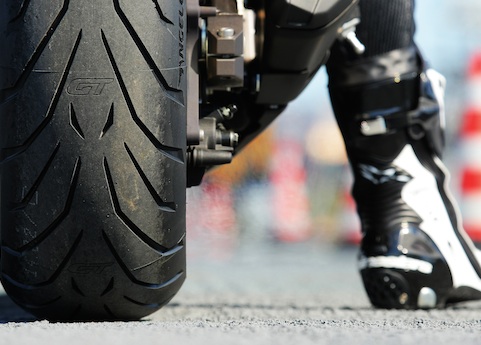
Slide an eraser across your kitchen table. Now try the same thing pushing down hard on the eraser.
This same thing happens when you brake on a motorcycle. The bike pitches forward transferring weight on to the front wheel, increasing front tyre grip. More so with sports bikes, tall with short wheelbase compared to cruisers, which are long and low.
Also consider the significant increase in grip experienced as the front tyre contact patch pressure multiplies due to the load transfer when braking.
To understand this, simply push a tyre with your hand and see how it flattens out. This is happening between the tyre and the road as weight transfers to the front tyre, increasing the contact patch and grip as you brake.
Also, as the brake is applied, torque is transferred through the wheel to the tyre contact patch, which creates a horizontal force at the road surface. The road pushes back on the tyre and equally the tyre pushes forward on the road. You can thank Newton for this mechanical grip; as for each force there is an equal and opposing force.
Front or rear or both
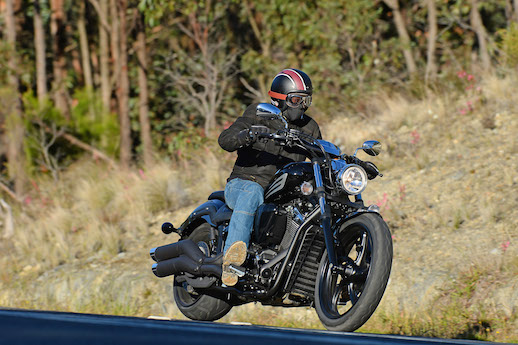
Other bikes like cruisers don’t pitch as much on the brakes and the rear wheel will not come off the ground. Thus the rear brake has some braking performance. However, the lion’s share remains with the front brake.
The majority of motoDNA students will lock the rear brake in initial emergency braking drills. This can put the machine out of control and the rider will be required to regulate the rear brake to regain control. Why bother with the rear brake if it’s easy to lock up and contributes little braking performance?
It depends on your bike. Good training and practice is the best way to understand your braking performance, your own reaction times and improve your skill.
Shifting
Obviously in an emergency the primary goal is to stop as quickly as possible. However what about the distracted car driver behind texting on their phone? Make sure when you have stopped that you are in first gear and ready to get out of the way of any four-wheeled chaos that might come your way.
Engine braking
Nothing will slow you down faster than the front brake. Make sure you get the clutch in nice and early. Another good reason for whipping the clutch in is the tendency to keep the throttle on in a state of panic. I regularly reassure guilty motoDNA students that as long as the clutch is disengaged this doesn’t matter as the bike will not drive forward.
Trail braking
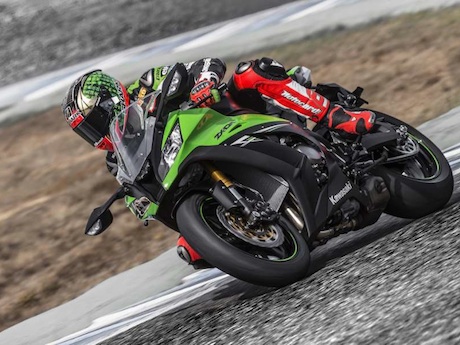
In applying this technique, a racer will approach a turn and at their braking marker apply full braking force, normally with the bike being upright. As they begin to turn in, they reduce brake pressure, easing off the brakes, decreasing or trailing the brake lever force as the bike lean angle increases until they get to the apex when they release the brake and apply the throttle.
Sounds easy enough in theory, but proper execution is complicated because it comes down to feel and remember these guys are doing this seamlessly, every lap on the limit! Trail braking is a handy skill to have and can be useful on the road in an emergency. Get training before you try this one.
Braking and turning
When emergency braking, you are asking a lot from the front tyre. If you need to swerve, best to get off the brakes and on them again. Again this is a highly skilled manoeuvre. Seek training and practise hard.
Ergonomics
I have seen plenty of examples of the front brake lever not properly adjusted or simply too far away from the rider’s hands. This means the rider has to stretch to reach the lever delaying the braking process. This is especially important for women who generally have smaller hands. Make sure your front brake lever is in the ideal position.
Road surface
Other factors such as road surface characteristics and other elements between the road and the tyre such as water, gravel and oil play an important part in braking efficiency. In the real world it’s a big ask to emergency brake on these surfaces. Experience, skill or ABS will define your outcome. Improve the first two with training.
Anti-lock brakes
It’s questionable whether anti-lock brakes can out-perform a skilled rider. However on the road, with the unknowns in grip levels, anti-lock brakes are simply one of the best safety additions for riding a motorcycle.
Real world
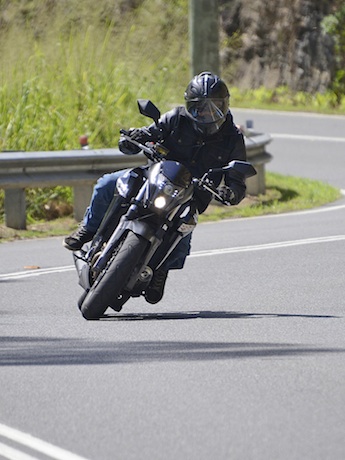
Thus, your total stopping distance will include a couple of extra elements such as perception and reaction times.
Perception time is the time taken to realise you need to react to a potential hazard. Reaction time equates to the distance travelled from the time you become aware of a hazard until you apply the brakes.
Perception and reaction times can vary with age and are typically 1-2 seconds.
Higher speed equals more distance travelled. At 100km/h, one second equates to nearly 30 metres! That’s almost 60m before you even start braking.
Tips for braking
It’s possible to lock the front tyre by grabbing the brake lever too quickly, before the bike has had time to pitch.
So first get off the throttle and initiate braking; this causes the bike to pitch transferring weight and grip to the front tyre. Then squeeze the front lever progressively until you come to a stop. At the same time you will whip in the clutch, tapping down the gears until you are in first gear ready to escape from following four-wheel hazards, all this while applying light pressure on the rear brake.
It’s best to practice using the front brake and clutch to begin with, then introduce the rear brake and downshifts.
Emergency braking is a must-have skill that motorcyclists should regularly practise. However, what about preventing the need to emergency brake in the first place?
* Improve your riding level and book a motoDNA advanced training course.


